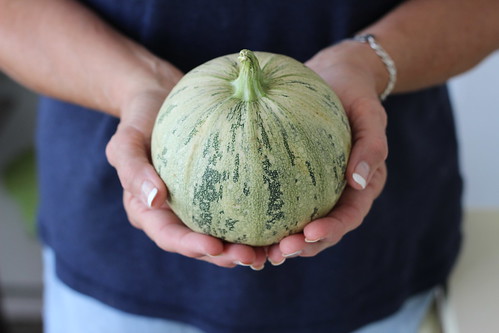
This post is part of the Science Tuesday feature series on the USDA blog. Check back each week as we showcase stories and news from USDA’s rich science and research portfolio.
Even though there’s still snow on the ground over much of the country, it’s about time to start thinking about the logistics of planting your garden later this spring. And while you’re thinking about it, why not consider going natural?
Whether you’re an avid gardener or just starting out, the idea of creating a garden using organic methods can seem overwhelming at first. But organic gardening is less daunting than you may think if you understand some basic principles; it’s about creating a more holistic, natural ecosystem and can be done right in your own backyard.
What distinguishes an organic garden from any other is the absence of synthetic fertilizers and pesticides. Synthetic chemical pesticides come from petroleum and other chemical sources while most organic pesticides are derived from plant, animal, microorganism, and mineral sources.
According to Mathieu Ngouajio, national program leader for organic agriculture at USDA’s National Institute of Food and Agriculture (NIFA), a successful garden begins with healthy soil texture and structure. Well-draining soil comprised of sand, silt, clay, and compost amendment is ideal. However, most backyards have a ratio that leans heavily to one side. Ideally, soil should have 50 percent pore space and 50 percent solid particles. To achieve this ratio, compost can be worked into the soil. The best garden soils have a loose, crumb-like structure that water, air, and plant roots can easily penetrate.
Soil fertility is the third component of healthy soil. The amount of nutrients in the soil, its texture, organic matter, and pH (the measure of alkaline), can all influence the fertility of soil. Organic gardeners often build the natural fertility by adding organic matter to preserve and improve soil structure and modify the soil’s pH balance.
An issue all gardeners face is unwanted pests. While some gardeners may turn to synthetic pesticides to tackle the issue, Ngouajio said that organic gardeners take a different approach—integrated pest management (IPM)—which combines biological, cultural, physical, and chemical strategies to control pests. IPM involves using the least environmentally harmful methods first and only using toxic methods as a last resort. IPM methods include using pest and disease resistant varieties of crops, rotating crops each year, cleaning tools, covering plants, and introducing predator organisms.
Weeds are another nuisance for gardeners. Natural remedies for eradicating weeds include pulling them out, smothering them with mulch, introducing plants that grow faster and stronger than weeds, and burning them using a weed flamer.
Learning the basics and working from the ground up—creating a healthy base, free of synthetic fertilizers and pesticides—is the first step in creating a sustainable organic home garden. For more information on organic gardening visit the USDA Organic Agriculture website.
